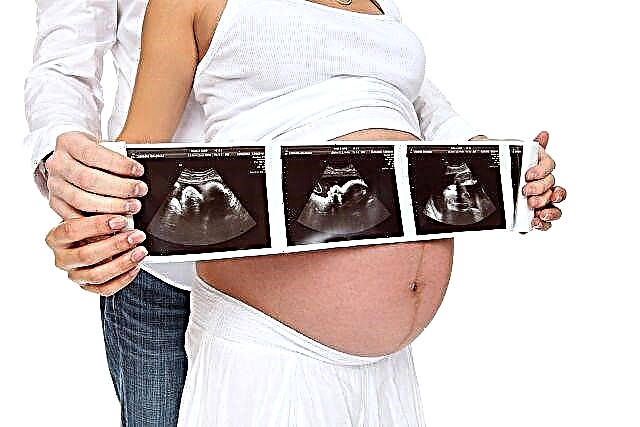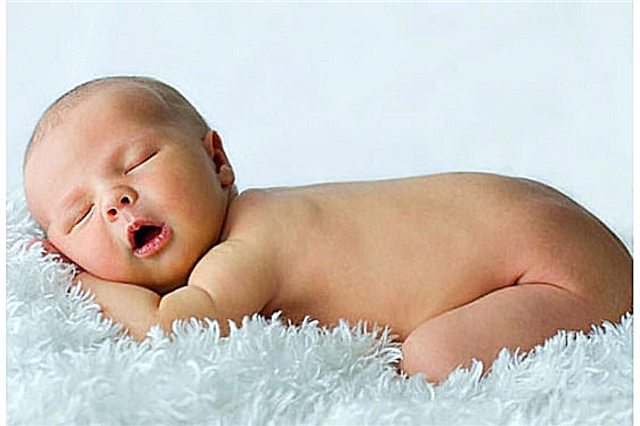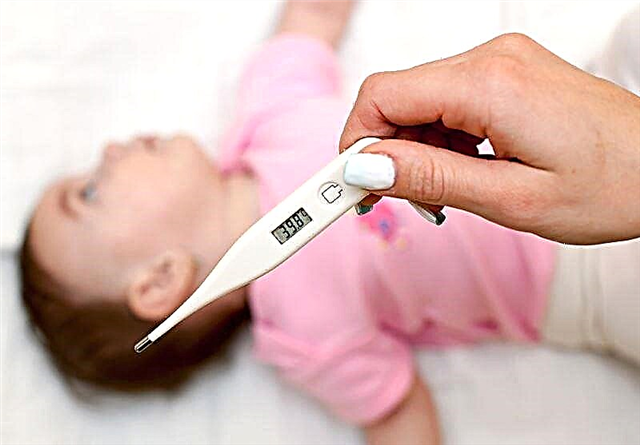
While the newly-minted person is in the hospital with his mother, the morning hygienic manipulations are performed by the medical staff of the maternity hospital. And by no means in every maternity hospital the nurse has enough time to teach every mother all the techniques and techniques for carrying out the morning toilet for the baby. And this is not as easy as it seems. Parents understand this on the very first day after discharge. How to organize the morning toilet for a newborn, we will tell you in this article.
Why is this needed?
The skin of newborns is very thin and delicate, it is more susceptible to negative effects. Babies do not have local immunity, and therefore any bacteria and fungi that cause severe skin diseases can infect a baby at any time if it is poorly or insufficiently looked after. The mucous membranes of the eyes and nose are the most important protective barrier against viruses, and therefore healthy shells additionally protect the baby. But they are also very vulnerable at this age. And with inadequate care, rhinitis and conjunctivitis can develop.

Due to age-imperfect thermoregulation process, newborn babies sweat more, especially their head and neck. And sweating is a fertile ground for the development of bacterial and allergic diseases. Most of the possible negative consequences can be avoided by properly and daily crumbs morning toilet. Simple manipulations will help keep your baby healthy and well-groomed.
List of necessary
For everyday exercise, a child who came with his mother from the hospital will need a lot of different things.
You can take care of their purchase even before the birth of the child, but if for some reason it did not work out, it is not too late to buy everything you need immediately after discharge.

The main thing is to have a memo on hand - a cheat sheet with a detailed list of toiletries and auxiliary things:
- Bucket... The newborn should have its own separate container for warm water, which will be needed for washing. It is better to disinfect these dishes after each use. It is advisable to buy a small plastic bucket, suitable for mom's hand.
- Oilcloth... It will be enough to buy a small special children's hygienic oilcloth with a quilted structure. On an ordinary smooth oilcloth, the baby will be cold and unpleasant.


- Cosmetic oil... For a newborn, you can buy a special baby oil marked "hypoallergenic" on the package. But you can get by with ordinary vaseline oil, high-quality peach or apricot oil (they are usually sold in pharmacies).
- Baby cream... You can buy a regular baby cream, or with the addition of chamomile extract or string. The purpose of this product is to moisturize dry skin.
- Diaper cream... This remedy differs from baby cream in that its task is not to moisturize, but to dry. Accordingly, it is used where the skin "gets wet".
For the same purpose, you can purchase a powder.
- Gauze... You should not buy a large piece of such material; it will be quite enough for a newborn to buy several packs of bandage. The main thing is that it is sterile. Mom will make some sterile gauze wipes out of it.
If you don't want to bother with bandages, you can buy ready-made packaged gauze wipes all at the same pharmacy. The requirement is the same - sterility
- Cotton wool... If you choose the usual medical cotton wool, then the mother will have to spend the evening in order to wind up the turundas necessary for carrying out the morning procedures for an infant. You can buy cotton pads (their pharmacy version), since it is faster and more convenient to twist the turundas and flagella from such material.
- Hydrogen peroxide... Sold in a pharmacy. The required concentration is 3%.
- Zelenka... Brilliant green solution - aniline dye. You can buy it at any pharmacy. The required concentration of the solution for the baby is 1%.
- Furacilin... It is best to take the drug in tablets. It is more convenient to dissolve and dose it for external use.
- Cardboard box. A shoe box will do. When performing manipulations into it, it will be possible, without distracting from the child, to throw away everything used and no longer needed. It is convenient so that later you do not collect turundas and diapers with napkins on the floor and changing table.


- Disposable diapers... It is necessary to prepare them for the morning toilet if the parents do not mind wearing such a hygiene product.
- Manicure scissors... You should not use scissors from mom's cosmetic bag to trim the child's nails, since they have very sharp tips, the baby can be injured. It is best to buy special baby scissors with rounded ends.


- Comb... For a newborn, it should have small, non-sharp teeth. You can buy a special brush for combing babies instead of a comb. Sold in pharmacies or children's stores.
- Thermometer... To buy a mercury or electronic thermometer for a child is the choice of parents. The electronic one measures the temperature much faster, and the mercury one is more accurate.


Care Algorithm
You should always make a morning toilet approximately at the same timeso that the baby gets used to it. The algorithm of actions must be strictly defined. After washing the priests, there is no need to touch the child's eyes, and the reasons for such precautions are quite understandable. Therefore, the main rule is from top to bottom.
The hands of the mother or the person performing the procedures should be clean, washed with baby soap. But you should not go to extremes and treat them with alcohol or other antiseptics, there is no need for this. The surface on which the child will lie must be sufficiently firm and level. It is not so important what it will be - a changing table, a regular table or a sofa, the main thing is that the surface is clean, that everything is covered with oilcloth, and on top - with an ironed diaper (to avoid children's "surprises" during the procedures).

If there is a changing table, it is undeniably very convenient. A woman does not have to bend over, because after giving birth it is quite difficult. But it is absolutely impossible to turn sideways or with your back to the child lying on such a table. Falling from such a height often leads to dire consequences and severe head injuries. Thinking that the crumb is still small and will not go anywhere is not worth it. Newborns are great at swinging their arms and legs, which is a convenient way to lose balance and fall from a height.
First steps
You should always start the morning toilet with a general examination of the child for rashes, inflammations, diaper rash. For this, the baby is undressed, carefully examined, and his temperature is measured.
Children's doctors advise to measure the temperature of the child every morning at least in the first three weeks of his independent life.

Then the crumbs are washed off with running water without soap. To prevent fecal particles from getting on the genitals and causing inflammation, you need to wash the baby with movements from the front to the back, and not vice versa. This rule should be firmly learned by the parents of girls, but the parents of boys should also adopt it.
It is not necessary to dry the baby with a towel, his skin is very sensitive. It is quite easy to get it wet with a diaper or soft towel. After that, you can proceed to the main "program".

Head
With a baby comb, gently comb the baby's hair, being careful not to damage the scalp. If the hairs are tangled, it is better to cut them off. If crusts are visible on the scalp, do not rip them off and burn them.
It is better to leave the crusts for an evening bath to soak them with oil and gently comb them out before bed.

Eyes
Caring for the eyes of a newborn is a crucial moment and you need to take it seriously. To wash the organs of vision, you need to prepare a weak solution of furacilin (no more than half a tablet of furacilin per glass of warm boiled water). You cannot handle the eyes with cotton wool, since small fibers of cotton wool can get into the eyes and cause an inflammatory process.
For eye treatment, you need to use gauze. A separate piece of gauze is used for each eye. Do not treat both eyes with one tissue. The gauze should be dipped in a warm solution of furacilin, squeezed out so that no liquid drips from it and gently held over the eyelids (the child reflexively closes his eyes) in the direction from the temple to the bridge of the nose. For repeated movement, use a new napkin.

If there are crusts or pus in the corners of the eyes, you should first soak them, and only then carefully remove them. A napkin with pus or crusts is immediately thrown away, you can no longer use it. In general, the presence of pus in the morning is not typical for a healthy baby.
If for several days in a row in the morning there is a noticeable accumulation of discharge in the corners of the eyes, a doctor should be invited to exclude conjunctivitis or dacryocystitis (blockage of the nasolacrimal canal, which is very common in newborns).
Ears
It is a parental crime to use cotton swabs to clean the ears, because they can easily injure the eardrum, and cotton particles from the tip of the stick can remain in the ear and cause an inflammatory process. It is best to clean the ears with cotton wool. The procedure should not be carried out daily, there is no great need for this. It is quite enough to process them 1-2 times a week.

The movements should not be deep, it is enough to clean the outer ear without affecting the middle section of the hearing organs. Cotton filaments are moistened with the same warm solution of furacilin, squeezed so that it does not drip, and gently clean the ear canal and auricle with rotary movements. If discharge, pus, serous fluid are noticeable from the ears, you should definitely call a doctor without waiting a day. This can be a sign of otitis media, which is also quite widespread among newborn babies due to the physiological features of the structure of the auditory tube.
Nose
Unlike the ears, the baby's nose should be cleaned daily. To do this, use wadded turundas. A separate flagellum is used for the left and right nostrils. The flagellum is slightly moistened with petroleum jelly. If not, you can use vegetable.

If there are dry crusts in the nose, they must first be soaked and only then removed. In general, the presence of crusts is a sure sign that the child is hot or breathing too dry air. Normally, nasal mucus should not dry out. Parents should adjust the temperature and buy a humidifier. The best parameters for a newborn are no more than 20 degrees Celsius and relative humidity at 50-70%.
Face
Here a ladle will come in handy for mom, which we recommended to include in the list of items necessary for the toilet. Boiled water is preliminarily poured into it, cooled to body temperature (usually 37 degrees, since this temperature prevails in babies of the first month of life). A cotton pad or gauze pad is moistened in water, squeezed and gently wiped without strong pressure on the forehead, nose, cheeks and chin. We must not forget about the chin crease and the space behind the ears.

If the child has a rash on his face, you can wash him with a solution of furacilin. When abscesses appear, you should definitely invite a doctor and consult with him in order to exclude pyoderma and other bacterial and viral diseases.
The child does not need to squeeze out any pimples and blisters on the face. The same applies to fatty glands, which are the norm in babies.
Nails
Newborns' nails are very sharp and grow incredibly quickly. Therefore, their length should be checked every 2-3 days. To prevent the crumb from scratching itself, you need to carefully trim them with children's scissors with blunt ends. After cutting, the fingers should be wiped with a furacilin solution.

Folds
Skin folds should be treated twice - in the morning and in the evening. A more thorough procedure should be in the evening after bathing. In the morning, it is enough to examine them, wipe them with a napkin soaked in boiled water. Then they are allowed to dry naturally, leaving the child undressed for a few minutes, after which, as necessary, they are treated with baby cream if the skin is dry or with powder if it is excessively wet.
Medicines like "Bepanten" should be used only if inflammation is detected in the folds of the skin - with prickly heat, with suspicion of diaper dermatitis.

Umbilical wound
The technique of treating the navel does not imply cotton, because its fibers can remain in the wound. Gently pinch a small gauze swab with tweezers. Hydrogen peroxide is dripped into the wound and they wait until the crust, if any, is soaked, after which the navel is gently blotted with a swab. The edges of the umbilical wound are treated with brilliant green (you can use cotton swabs for this).
It is important not to get green paint on the wound itself. If not all the crusts are soaked, nothing should be torn off.

Memo to parents
Several important rules:
- Don't use the toilet on an empty stomach, if the child is hungry, then the mother will definitely not be able to calmly do everything necessary. It is best to schedule your treatments half an hour after your morning feed. This can be difficult, however, as newborns fall asleep after eating. Another option is to wake up the baby half an hour before the upcoming morning feed. He will still not be so hungry and will be able to calmly endure the time before eating.
- Morning procedures rarely delight the infant. Usually children really do not like to rinse the nose and eyes. Play techniques, an affectionate song, a rhyme, and funny sounds will help make parenting actions more pleasant for the baby. The child will begin to perceive the toilet as a game.
For information on how to carry out the morning toilet for a newborn, see the next video.



